The Guide to Sales Performance Management
Casey O'Connor
Contents
- What Is Sales Performance Management?
- The Benefits of a Sales Performance Management Program
- How to Measure Sales Performance
- Communicating Performance Expectations With Your Sales Team
- Techniques for Coaching Your Team Toward Better Sales Performance
- How to Provide Feedback on Sales Performance
- What to Do if Your Team Does Not Meet Sales Expectations
- Sales Performance Management Software
Sales performance management (SPM) represents the various activities that go into planning, monitoring, and improving sales performance.
Effective management of sales performance can make a dramatic impact on your bottom line. It can mean the difference between sales teams that have mediocre or average performance, and those who consistently overperform and outearn their peers.
In this article, we’ll go over everything you need to know about how, when, why, and how to manage your team’s sales performance with an SPM program.
Here’s what we’ll cover:
- What Is Sales Performance Management?
- The Benefits of a Sales Performance Management Program
- How to Measure Sales Performance
- Communicating Performance Expectations With Your Sales Team
- Techniques for Coaching Your Team Toward Better Sales Performance
- How to Provide Feedback on Sales Performance
- What to Do if Your Team Does Not Meet Sales Expectations
- Sales Performance Management Software
What Is Sales Performance Management?
Sales performance management is the set of activities that go into:
- Planning and designing the sales process
- Monitoring and evaluating sales performance metrics
- Using performance data to tweak the process until it’s optimized
- Incentivizing and motivating sales professionals for top performance
SPM is becoming a more and more necessary role for sales managers. With today’s rapidly and continuously changing sales landscape, it’s critically important that sales teams stay on top of their performance and work to enhance areas of strength and refine areas of growth.
Sales performance management sometimes gets conflated with incentive compensation management (ICM), but the two are not quite one in the same. ICM — that is, managing the way sales reps are incentivized for their performance — is, indeed, one component of SPM. But it doesn’t represent the full scope of what exactly sales performance management really is.
Effective Sales Performance Management
Instead, an effective sales performance management process should take a more holistic approach. It focuses on three primary things:
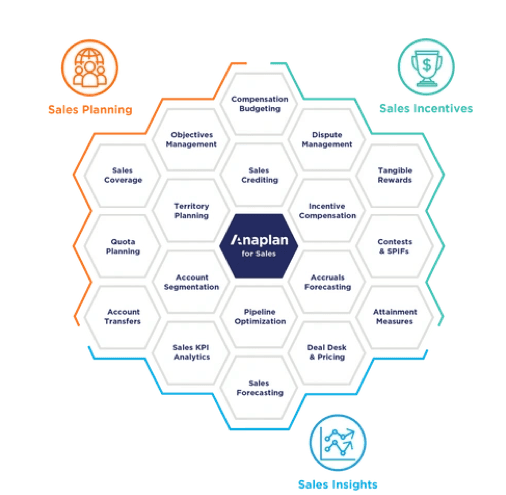
- Sales Planning: Sales planning refers to the way a sales team divides and conquers their sales pipeline. It can include things like sales territory management, account segmentation, and quota planning.
- Sales Insights: This aspect of SPM covers much of the data-forward aspects of sales — things like KPI analysis, sales forecasting, quota management, product pricing, and pipeline management and optimization.
- Sales Incentives: This is what most people think of when they hear SPM. Sales incentives refer to the combination of ways sales management motivates their salesforce with things like compensation structure, rewards, and attainment process.
In other words, SPM is responsible for all the things that go into structuring, coaching, and motivating sales teams to continuously improve their performance.
The Benefits of a Sales Performance Management Program
Many of the components of a successful SPM program are often already present in even mediocre sales teams. For that reason, some sales managers may be reluctant to formalize a dedicated SPM program.
The extra time and effort it takes to structurize these activities, however, are well worth it. A well-defined SPM program can offer a huge number of benefits to your sales team and, ultimately, your bottom line.
More Robust Pipelines
An effective sales performance management program will enable your reps to fill their sales pipeline with more qualified leads earlier on in the funnel. In fact, the insights gathered from SPM can help sales managers tweak and optimize their sales strategies throughout the various stages of the sales process.
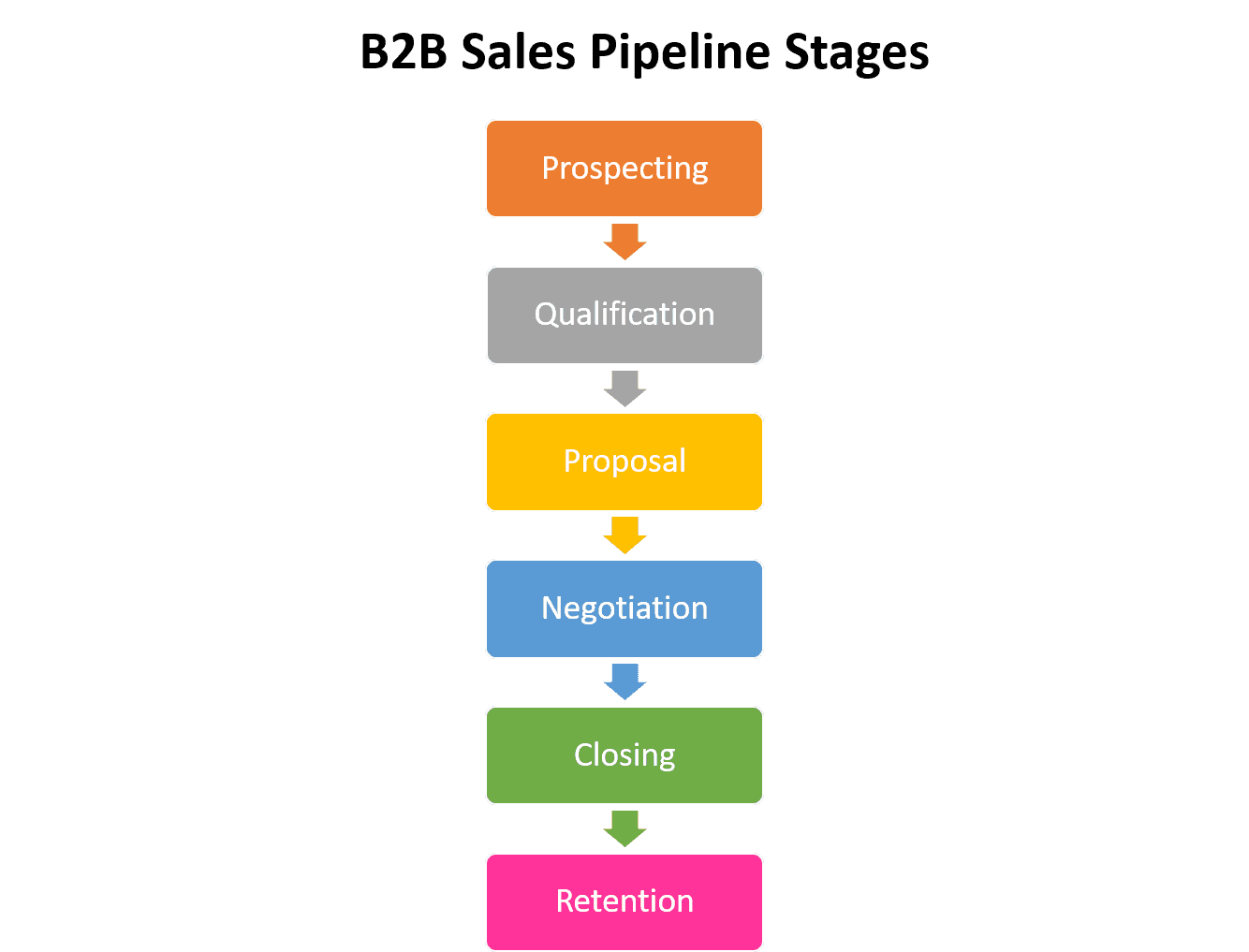
Sales performance management can also improve the pipeline of qualified reps who are ultimately hired on by your company. A robust incentive program designed by SPM can attract top-tier talent to your sales team and make a big difference in your retention metrics.
More Precise Sales Analytics
The more defined your SPM program is, the more effective your data collection will be. A good sales management program will help your sales reps better understand the data coming in, as well as target the right data in the first place. This will help you more accurately predict future sales trends and improve your forecast accuracy, which is crucial for goal-setting and investor relations.
Improved Bottom-Line Performance
At the end of the day, most sales programs and activities are judged based on one factor: whether or not the action translates to bottom-line results.
An effective SPM program can help you reap a significantly better ROI on the sales enablement activities you implement within your team. It can lead to:
- Optimized territory and account management
- Better conversion rates through every stage of the sales cycle
- Highly motivated sales reps who work hard to exceed quota and close larger deals
Ultimately, all of these benefits add up to significantly larger profit margins and a nice boost to your bottom line.
How to Measure Sales Performance
Measuring sales performance is a key aspect of SPM. It is, after all, the driving force behind all of the activities within an SPM program. If you’re not already measuring a multitude of factors within your sales program, it’s time to start.
Many sales managers and other decision-making executives emphasize results-driven data insights. That is, they judge performance based on bottom-line performance, and little else.
While it’s absolutely true that impact on revenue is a huge determining factor in whether or not a particular sales rep, sales strategy, or sales process is effective, the reality is that a sales performance management program should focus on measuring both the process and the outcomes.
Learn more here: How to analyze sales performance.
Sales Performance Management
Ultimately, sales performance management should aim to look at sales performance from three different lenses:
- Performance Standards: These represent the more traditional aspects of sales measurements — things like sales KPIs, conversion rates, quota attainment, size of closed deals. These kinds of measurements are typically higher-level insights, with many steps needing to be completed before data becomes available.
- Administrative Standards: These kinds of measurements aim to look at performance from a more granular level. SPM programs should carefully take into account metrics like the length of the sales cycle and sales productivity metrics.
- Professional Development Standards: This aspect of sales measurement is often overlooked because it can be hard to define objectivity and standardize the method of measurement. Nonetheless, the best SPM programs should be accounting for how well sales reps utilize and apply the various training, coaching, and continued development opportunities available to them.
Many companies spend tens and even hundreds of thousands of dollars on elite coaching programs with no tangible way to measure how they ultimately translate to bottom-line performance. This can mean resources down the drain.
The way your sales manager decides to evaluate this component will be company-specific and should be carefully considered and clearly defined. The SPM program needs to have detailed information about how salespeople will be measured around their professional development.
An SPM program that approaches sales measurements from these three angles will virtually guarantee that each component of a successful sales rep can ultimately be optimized over time.
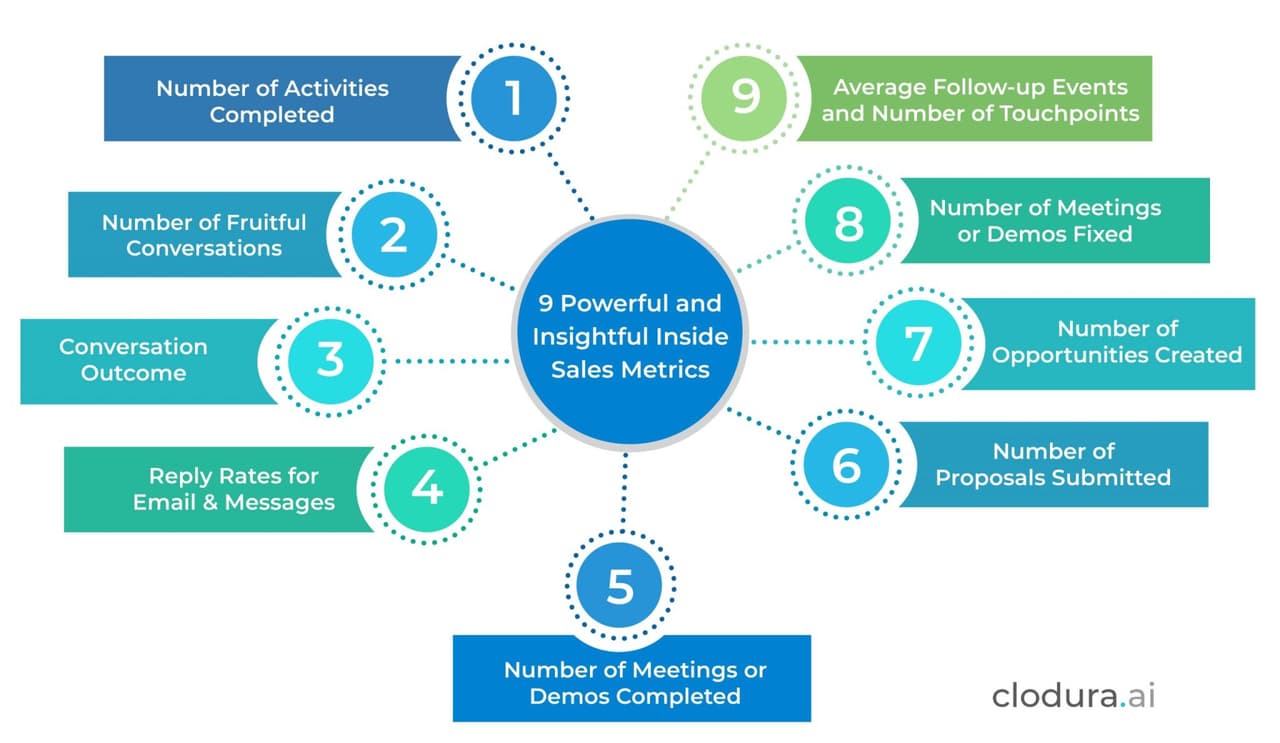
Communicating Performance Expectations With Your Sales Team
For many sales managers, there’s a fine line between working as a peer alongside the rest of your sales team, and overseeing and making decisions regarding their work and performance.
As uncomfortable as it may be, it’s important for sales managers to be able to clearly and effectively communicate expectations to the sales team with both a sense of authority and one of support. Here are a few tips for walking that delicate line.
Collaborate for Buy-In
People are much more likely to work toward a set of expectations if they had a hand in creating them; this is true even outside of sales.
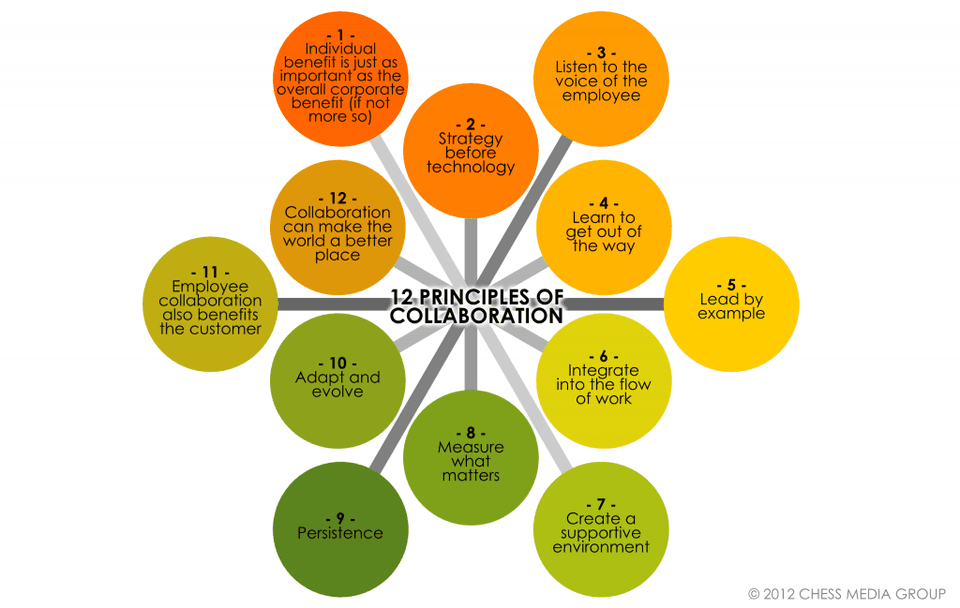
Whenever possible, invite collaboration with the entire salesforce. Analyze your current metrics, targets, and forecasts together, and openly solicit ideas or concerns around how to best achieve your sales goals. The more collaborative and inclusive this process is, the more likely you are to have reps who are eager and determined to meet and exceed expectations.
Behaviors and Results
Sales expectations should be defined both in terms of bottom-line results, and the behaviors that lead to them.
Many sales professionals place too much emphasis on the results that come closer to the end of the sales process. These are lagging indicators — by the time you reach these results, it’s generally too late to fix any inefficiencies in the process.
Make no mistake — lagging indicators are very important and should be included in the expectations you outline to your team. That being said, it’s also important to speak to the leading indicators that determine those outcomes.

Be sure to clearly define which behaviors you expect from your sales team, as well as when to perform them and how that performance will be measured. By clearly setting expectations around leading indicators like pipeline volume and the number of calls set up by a sales rep, you give your team the opportunity to correct missteps in the process before they become problematic to your sales targets.
Be Specific, Succinct, and Personal
The more specific you can be about your expectations, the better. You will need to define not only the leading and lagging indicators you’ll be looking at, but also how and when they will be evaluated.
Take time with your team to get on the same page about how your sales metrics are defined, measured, and weighed within your organization.
Again, there’s a fine line here. No one likes to be micromanaged, so avoid communicating the idea that you’ll be watching a rep’s every move. Your expectations should be rigorous, but also reasonable.
One way to mitigate this pitfall is to be as personal as possible when setting expectations. Different sales reps have different skills, and the performance metrics you focus on may vary based on who’s on the receiving end.
Resist the urge to send a one-size-fits-all email with your expectations; this can come across as more of a list of demands, and could potentially create opposition among your team. Of course, it’s okay to have team-wide expectations. But you should also strive to target individual behaviors and results based on strengths and weaknesses of each specific rep, as well as your company’s specific sales activities.
Follow-up (a Lot)
Once you lay out your expectations, it’s critically important that you follow up on them in a variety of ways.
First, check for understanding. Ask the rep to repeat or paraphrase back to you what they understand their expectations to be.
It’s okay to invite questions or comments during the expectation conversation. As mentioned above, collaboration breeds buy-in. That being said, it’s also okay to have a few ready-to-use responses if you feel that reps are unreasonably rejecting your guidelines.
If, for example, you feel some pushback, you might say something like, “Thanks for that concern, Jim. Sounds like you’ve thought about this a lot. The plan right now is to adhere to these expectations for Q1. I’m making a note now to revisit your suggestion when we plan for Q2.”
If you communicated first in person, make sure you follow up by recapping your conversation in writing.
Finally, make sure you and the rest of your sales organization has access to — and utilizes — the real-time data analysis features embedded in your CRM. Sales managers should monitor this frequently and should encourage their reps to do the same. Regular progress monitoring is one great way to make sure the team is consistently moving forward and meeting expectations without issue.
Techniques for Coaching Your Team Toward Better Sales Performance
Sales coaching is quickly becoming the most effective way to see a viable change in your sales reps’ performance.
Studies show that sales reps who receive at least 3 hours of coaching per month:
- Exceed their selling goals by 7%
- Increase revenue by 25%
- Increase close rate by 70%.
Those are significant improvements across the board. While sales coaching can be time- and money-intensive, the results speak for themselves. 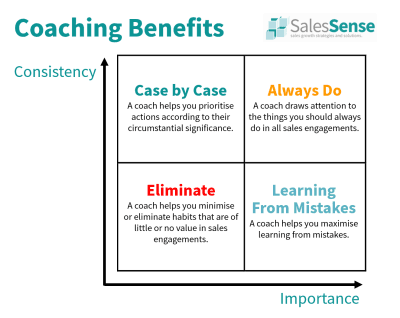 Some companies choose to hire outside consultants for sales coaching. Others opt to train their sales managers in sales coaching best practices and implement coaching in-house. This can be extremely beneficial if you have the resources — your sales managers will always know their reps better than outside consultants, which will make the experience much more personal and effective.
Some companies choose to hire outside consultants for sales coaching. Others opt to train their sales managers in sales coaching best practices and implement coaching in-house. This can be extremely beneficial if you have the resources — your sales managers will always know their reps better than outside consultants, which will make the experience much more personal and effective.
If you choose to train internally for sales coaching purposes, keep the following tips and techniques in mind for best results.
Be Transparent
Whatever data you use to drive your coaching, make sure it’s accessible to (and frequently accessed by) everyone. One of the worst things a coach can do is to give insight without sharing the data to back it up. Withholding performance information from reps, while simultaneously using it to coach them, can lead to miscommunications at best and, at worst, a serious power struggle.
Sales Are for Sales
One of the most common reasons salespeople do not meet their goals is because they’re bogged down by non-sales activities. In fact, the average salesperson spends only 36% of their time on revenue-generating activities. The rest of their time is spent on non-sales things like administrative tasks and data entry.

Sales coaches should carefully scrutinize the way sales reps are being asked to spend their time. The intention here is not to micromanage or imply that reps are mismanaging their time; in fact, quite the opposite. The sales coach should first make sure that sales reps are alleviated of every possible non-sales activity. A good sales enablement team can help with this and vastly improve the workflow of the entire organization.
After all, your sales coaching will never have the chance to take hold if your reps rarely have an opportunity to practice it.
Build Relationships
It’s likely that, if you look back on the best coaches or teachers you’ve worked with over the course of your life, the very best were the ones who made an effort to get to know you.
The same is true for sales coaching. It’s important to spend time getting to know your sales reps on both a professional and friendly level. While you may be a manager or coach, you’re also a peer. Build trust by allowing sales reps to self-evaluate and guide goal-setting and evaluation conversations.
By that same token, it’s also important to stay informed and involved throughout the sales process — not just when it comes time to go over the results. Most sales reps would not take kindly to someone coaching them after a win or loss without having watched them play the game.
The reality is that sales coaching is less about results and more about behavior change. Coaches need to be involved and up-to-date on day-to-day performance throughout in order to target those behaviors.
Get to the Middle of the Pack
No matter how outstanding your salesforce is as a whole, it’s quite normal to have three general groups: top performers, below-average ones, and those who fall in the middle of the pack. The top and bottom groups represent about 40% total of your salesforce, meaning that the 60% majority is made up of “average,” middle-of-the-pack sales reps.
Many sales coaches make the mistake of training only the top or bottom tiers. But the truth is, training the top rung is unlikely to make a dramatic difference to their already stellar results. Training the bottom rung will likely only move them to the middle of the pack.
Instead, and somewhat counterintuitively, sales coaches should focus most of their energy to the middle 60% of performers. This segment will provide the most bang for your buck, so to speak.
How to Provide Feedback on Sales Performance
Most sales coaches and managers have no problem delivering good news to reps who have met or exceeded their expectations, but delivering feedback to average or subpar performers can be more challenging.
It’s best to keep your feedback process relatively standard, regardless of how positive or negative the data is. The following are some best practices for delivering sales feedback that is fair, productive, and respectful.
- Do It Immediately: Whenever possible, provide feedback in real-time. The vast majority of sales reps want to perform their best, and it’s hard to get negative feedback at the end of a process that could have been improved upon much earlier.
- Do It Regularly: Along those same lines, it’s also important that you schedule regular intervals for performance reviews. Reps should know when to expect a conversation around their performance so that they can adequately prepare and work toward predetermined targets.
- Use Numbers and Words: Wherever possible, use sales data to back up your assessment; this will help the conversation be more objective. That being said, it’s also beneficial to write a summary of performance for each individual sales rep that outlines their strengths, areas of growth, and how they specifically contribute to the bottom line.
You may also consider developing with your team a process for determining a scaled score. Remember to keep this transparent if you go this route.
Conducting performance reviews may not be the most desirable aspect of being a sales leader, but they’re a crucial component of any sales team that wants to meet their sales quotas, drive revenue, and crush their overall business goals.

What to Do if Your Team Does Not Meet Sales Expectations
If performance reviews are challenging, then the question of what to do when expectations are not met is downright nearly impossible.
It’s certainly no one’s favorite part of the job to deliver bad news, but addressing missed benchmarks and failed expectations is one of the things that make top sales teams stand out among the rest.
Before you start assigning blame, though, make sure you’ve done the proper due diligence on your own end. You should be able to answer “Yes” to all of the following questions before you start ringing the alarm on individual reps or activities.
- Have you collaborated with your sales team to clearly define the expectations?
- Do you have a well-defined sales process map that defines who does what in the sales process, and when?
- Are there ample opportunities for training and coaching for sales reps who want them?
- Are you using the SMART goal framework to set goals?
- Is your sales compensation plan incentivizing enough to attract and retain top talent?
If the answer to any of these questions is “No,” it’s time to go back to the drawing board before you make any critiques on an individual sales rep’s performance.
On the other hand, if you feel confident that the necessary structures and expectations are solidly in place, you may want to consider using a strategy called the Five Whys. The Five Whys strategy was developed by Toyota, and is designed to get to the root of the problem at hand.
The process is quite simple — you ask a question, listen to the rep’s response, and follow up with another question beginning with “Why.” You repeat this process up to five times, or until you’re satisfied that you understand where the true issue lies.
Let’s have a look at an example of this in action:
Sales Rep: I didn’t meet my quota this month.
Sales Manager: Why didn’t you meet your quota this month?
Rep: Because it took me much longer than expected to qualify this month’s batch of leads.
Manager: Why did it take you so much longer?
Rep: Because I wasn’t sure which leads to prioritize and I spent too long on leads that were overall bad fits.
Manager: Why didn’t you know which leads to prioritize?
Rep: Because I had to spend a lot of time sifting through their Buyer Persona details within the CRM.
Manager: Why did it take you so long to access this data?
Rep: Because I haven’t been trained in how to use it and it took a while for me to get up to speed.
Here, the root of the problem seems to be that this particular sales rep is unclear on how to use the automation software available to them. This may be a one-off, or it may be a team-wide problem. Regardless, the sales manager can now address this issue and evaluate the next cycle accordingly. It could be that there are still issues; that’s okay. Use the same process to get to the root of the next solvable problem.
Remember, you ultimately want to act as a support and problem-solver for your sales team — not someone who reprimands them when things go wrong.
Sales Performance Management Software
SPM can seem like a daunting task to add to an already busy sales manager’s plate. Even despite the various benefits of implementing an SPM program, the thought of adding yet another set of responsibilities is not exactly an exciting one.
Good news — there are plenty of software and automation tools available to aid in the SPM process. Here’s a look at just a few of our favorites.
Joopy
Joopy is a cloud-based software that helps sales organizations simplify their sales process and grow their bottom lines. It easily calculates and streamlines the various compensation and incentive programs offered within your organization.
Xactly
Xactly boasts error-free incentive tracking and compensation to increase operational efficiencies. Their software also delivers highly accurate sales forecasts and reliable predictive analytics.
Yesware
Yesware easily manages many of the capabilities of other SPM software, like reporting and analytics. It also offers a suite of tools such as automated, personalized email campaigns, engagement tracking, and a meeting scheduler. The tool allows sales managers to easily analyze activity and results to improve outcomes. Yesware integrates into your Gmail or Outlook inbox, making it an attractive option for nearly any sales organization.
Performio
Performio is a highly customizable platform in which each rep gets their own platform where they can easily see their performance and compensation mapped out. The software enables sales managers to spend less time calculating rewards and more time optimizing the sales process.
Oracle
Oracle offers an adaptable, highly automated SPM platform that targets the many needs of a modern, mobile sales organization. It aims to help sales organizations reduce costs and increase revenue.
Anaplan
Anaplan software enables sales teams to connect revenue plans to stabilize sales performance and drive growth. It targets the three components of SPM: planning, incentives, and insights.
Creating an SPM program for your sales organization is time well-spent for any team that wants to attract, retain, and compensate top-tier talent to drive revenue growth. Follow the tips and tools laid out in this guide, and you’ll be well on your way to a very robust sales performance management plan.
Get sales tips and strategies delivered straight to your inbox.
Yesware will help you generate more sales right from your inbox. Try our Outlook add-on or Gmail Chrome extension for free, forever!
Related Articles
Casey O'Connor
Casey O'Connor
Casey O'Connor
Sales, deal management, and communication tips for your inbox

